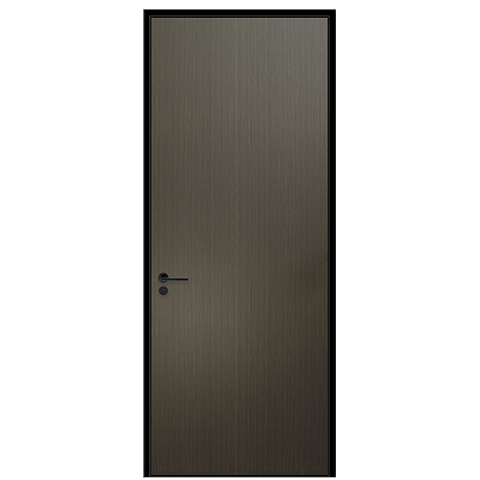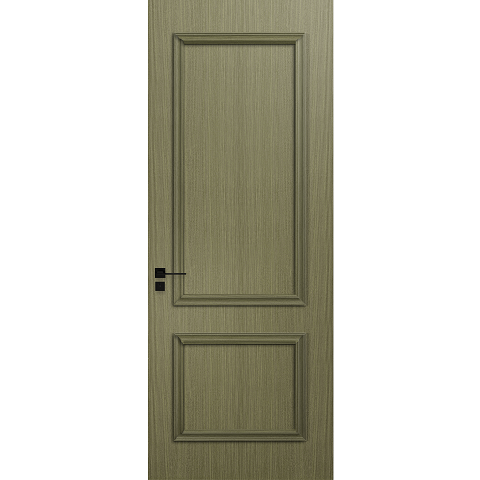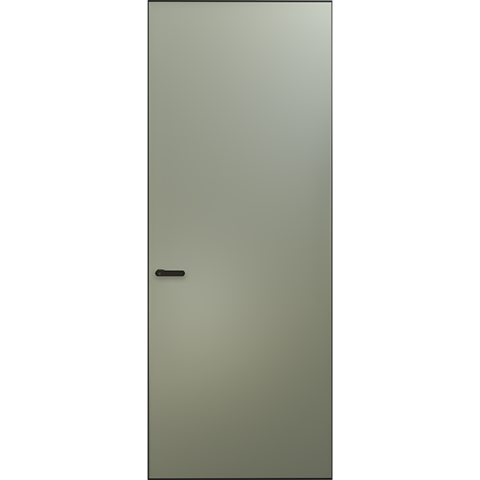Screws for hardware details of home improvement doors and windows
In this issue, we start from the details of the hardware and come with "screws".
01 Screws on doors and windows
If someone asks, how many types of screws are there in the world?
Baydee could only shake his head silently and let out a long sigh—it can be said that there are so many stars, the stars are so bright.
Just according to its head shape, it can be divided into cylindrical head, semi-sunk head, countersunk head, cylindrical head, hexagonal head... Not to mention, there are many thread styles. If you really want to summarize them all, Baydee I'm afraid I couldn't finish chatting for the last three days and three nights.
Then let's put our eyes on a "narrower" perspective. What are the three "screw" giants in the door and window industry?
First, there are expansion screws please.
This expansion is not what it is literally associated with. After the screw is nailed, it will suddenly expand to strengthen the connection strength.
The principle of the expansion screw is to make the expansion tube form a large pressure on the surrounding through the movement of the thread, so as to achieve the fixing effect.
Compared with ordinary screws, it has smaller drilling holes, greater tension, and can be removed at will, so it frequently appears in every corner of our life, but it is also prone to mistakes. When installing, pay special attention to the depth of the hole, whether it is deep or shallow. , will affect its fixation ability.
Then there are the self-tapping screws.
The name already defines its ability well-good at self-attack.
Compared with the "flat-head boy" of ordinary screws, self-tapping screws are a "thorn head".
Its sharp-edged shape can directly drill into the inside of the profile without drilling holes in the profile, and it is surprisingly lethal just by listening to it.
High texture, high strength, and strong corrosion resistance (more exposed), it has become one of the giants in one fell swoop.
Finally, there are the drill tail screws.
Its characteristic is that the tail is in the shape of a drill tail or a pointed tail. It can directly drill, tap and lock the material without auxiliary processing. All processes are completed in one go, which greatly saves construction time.
Compared with ordinary screws (lay down the gun again), its toughness and holding force are high, and it will not loosen after a long time after combination, and the stability performance is higher.
The characteristics and differences between self-tapping screws and self-drilling screws are located at the tail.
The tail of the self-tapping screw is pointed, thick and hard, with a certain taper, but it cannot be drilled, while the threaded head of the self-drilling screw is like a drill bit that can be drilled.
The two are still well distinguishable.
Now that we have introduced the three giants in the door and window industry, let us analyze again. What are the seemingly simple and ordinary screws made of?
02 Screw material
Common screws on the market are mainly carbon steel, stainless steel and copper, these three main materials.
Because copper screws are not used as frequently as the former two, they were ruthlessly passed by Baydee (to be discussed in another day).
Carbon steel screws are our most common iron screws.
According to the profile, it can be roughly divided into low carbon steel (the most common), medium carbon steel, high carbon steel (basically not available in the market) and alloy steel.
The proportion of chemical components in raw materials determines their hardness difference.
Low-carbon steel is the most frequently used, mainly used in products without hardness requirements, so when we encounter situations in our life that require knocking and clanging, we generally choose it. As for other types of carbon steel screws, Used in large machinery manufacturing.
Another common material is stainless steel, which is worthy of our chatter.
There are three main materials, austenite, martensite and ferrite. The common series in China are SUS 200, SUS 302, SUS 304 and so on.
Some consumers will use whether stainless steel is magnetic or not as the basis for judging whether its quality is good or bad, which is not scientific.
This is related to the content of substances contained in the material and the chemical process.
The 200 and 302 series of stainless steels currently in circulation in the market are not magnetic, but their performance is very different from that of 304. 304 will also be slightly magnetic after stretching, annealing, polishing, casting and other processes, so it is considered to be magnetic. , to judge its quality, this idea is too one-sided.
We use the anti-rust ability of stainless steel as the basis for judging its quality, and we can identify it with a stainless steel identification agent.
The worse the rust resistance of the material, the faster the reddening speed and the darker the color; the better the rust resistance, the slower the reddening speed and the lighter the color.
Seeing this, maybe some friends will have such doubts.
Since both types of screws are common to us, is there a difference between them?
Baydee believes that there is not much comparability. The materials of the two are different, and the environments used are also different. It is impossible to compare them objectively. Both have their own advantages.
Carbon steel: I am cheaper than you!
Stainless steel: I anticorrosion.
Carbon Steel: My strength is higher than yours!
Stainless steel: I anticorrosion.
Carbon steel: ...
The answer to this question, although Baydee judges that there is no solution, but in the selection of screws for our home decoration doors and windows, stainless steel screws must be used.
It can ensure the anti-corrosion endurance of the hardware and extend the service life of doors and windows to a certain extent.
03 Specifications for use in doors and windows
1. The location of the three common screws used in doors and windows
Baydee talked about the "three giants" screws in the door and window industry, so how do they perform their duties in the door and window?
Expansion screws are mostly used between the window and the wall to connect the two, while self-tapping screws and drilling screws are mostly used for the connection between the frame and sash.
But there is one thing to pay more attention to: the tail of the drill end screw will damage the material more than ordinary screws during the process of reaming, so it is not suitable for splicing in the sliding brace.
2. Wrong screws
When some installers are driving screws, they will drive the screws on the heat insulation strip due to unprofessional operation... This kind of "divine operation" is not uncommon every year, and even becomes commonplace.
At this moment, Baydee will tell everyone that this approach is wrong, we'd better pay more attention during the installation process of the master, and beware of this situation.
Many installers are keen to fix the screws on the heat insulation strip, because the texture of the heat insulation strip is very soft, and it is easy and labor-saving to screw in a circle.
There seems to be no problem, but the heat insulation strip is not stressed, which cannot guarantee safety, and destroys the heat insulation performance of the broken bridge aluminum.
Then again, Baydee does not recommend pulling out the screws that have already been driven into the heat insulation strip. Instead, you can add a few more screws on the aluminum alloy next to it to make up for the problems caused by this mistake.
In the wrong hitting of the screw, there will be another situation, that is, the integrity of the material surface will be destroyed, which needs to be compensated. (But reality is often difficult to achieve a one-to-one restoration)
For example, some masters will make mistakes in operation and make wrong holes during installation. As long as it does not appear on the exposed surface, the problem is not big, as long as the whole door and window can be stabilized. But if the wrong hole appears on the surface, it is a matter of concern. The "big event" of appearance.
3. Door and window screw spacing
It is mainly judged by the profile of the door and window frame. Although the more screws are screwed, the stronger the stability of the door and window will be. However, we also have a rough plan for the spacing of the screws, within 40-60 cm.
04 Problems and solutions for door and window screws
All we are dealing with are stainless steel screws, and here Baydee only explains the solution for screws made of stainless steel.
1. Loosening of door and window screws
Baydee has "running" in the door and window industry for many years, and it is one of the most common problems for the sliding stay screws of outward opening windows to loosen.
If things go on like this, it may lead to a fan crisis.
In this regard, Baydee’s suggestion is that we use an electric drill to detect, and once the screw is found to be loose, it must be tightened in time, or the screw with stronger bite force should be replaced to kill the danger in the cradle.
Another common screw loosening occurs on the door handle. There are two main reasons for this problem: the loosening caused by long-term force or the loosening caused by the insufficient length of the screw on the fixed base.
Here, Baydee also uses the DIY repair method for most of the fork handles: to loosen the screws, you only need to find a fixed position, and then use tools to tighten the screws.
And if the effect of tightening the screw is not good, it may be that the length of the screw is not enough. We can replace the thicker screw, such as changing the 4.2 size to 4.8; or change the longer size, such as changing the 2 cm into 5 cm; when the above two methods cannot be solved, rivet screws can be used.
2. Breakage of screws
Although it is a small probability event that the screw will break, there are many possibilities that may cause this problem.
The quality of the raw materials is not good, resulting in its overall hardness not up to standard; process problems in the production of screws, design and operation errors in the down punching operation; the torque force is too large during the installation process, which exceeds the capacity that can be tolerated. All three of these possibilities can lead to breakage of the screw.
And wanting to break the screw is also a very challenging thing.
When the breakage of the screw occurs at the window frame, if it is really difficult to get it out, even if we leave it in the frame and make another one next to it, then the problem is not too big, but if the breakage occurs at the handle, such Where it is irreversible, it is "finished" and can only be replaced as a whole.
3. Rusted screws
Screw rust is a problem that cannot be ignored.
Some people wonder why it is named "stainless steel", but it is still accompanied by the problem of rust?
No matter how good a product is, it is inseparable from a use environment, this invisible factor.
Such as stainless steel screws commonly used in the market, the nickel content in the 304 series is 8-10%, and the chromium content reaches 18-20%. Such a configuration does have excellent corrosion resistance in dry and clean air, but If it is moved to an area near the coast, the large amount of salt in the air will also cause it to corrode over the years.
Therefore, it is not stainless steel that can permanently guarantee "stainless".
In the early stage, we saw the rust of the doors and windows. If it does not affect the use, we may not pay too much attention to it, but when it is really rusty, even if you want to replace it, it will become extremely difficult.
Especially the pulleys of sliding doors are rusted, which not only seriously affects the use of doors and windows, but when the rust reaches a certain level, the windows can only be removed and replaced.
So if we want to ensure its stainlessness to the greatest extent, what can we do?
First of all, countersunk hole design can be used to directly prevent the screw from contacting the outside world, which solves the problem from the root; secondly, do a good job of maintenance, do a good job of oiling the sliding brace on the outward opening window, or use a desiccant Rust agent (a universal treasure, worth having); finally, the screws exposed outdoors should be treated with anti-rust treatment.
05 Final words
This is the end of this issue of door and window hardware screws, and I will say a few more words at the end.
Stupid little pig wrote in "The Way of a Great Country": Even if a traditional industry processes a screw, it is actually a high-tech. The production of screws requires casting, forging, welding, turning, grinding, milling, planing and other processing processes. These processes require proper heating and cannot be completed by unskilled workers.
In modern technology, it is not difficult to make a screw, but although it is small, it still has great potential, and it has a "vital" position in home decoration.
 Hot Recommendation
Hot Recommendation
 Latest Products
Latest Products



